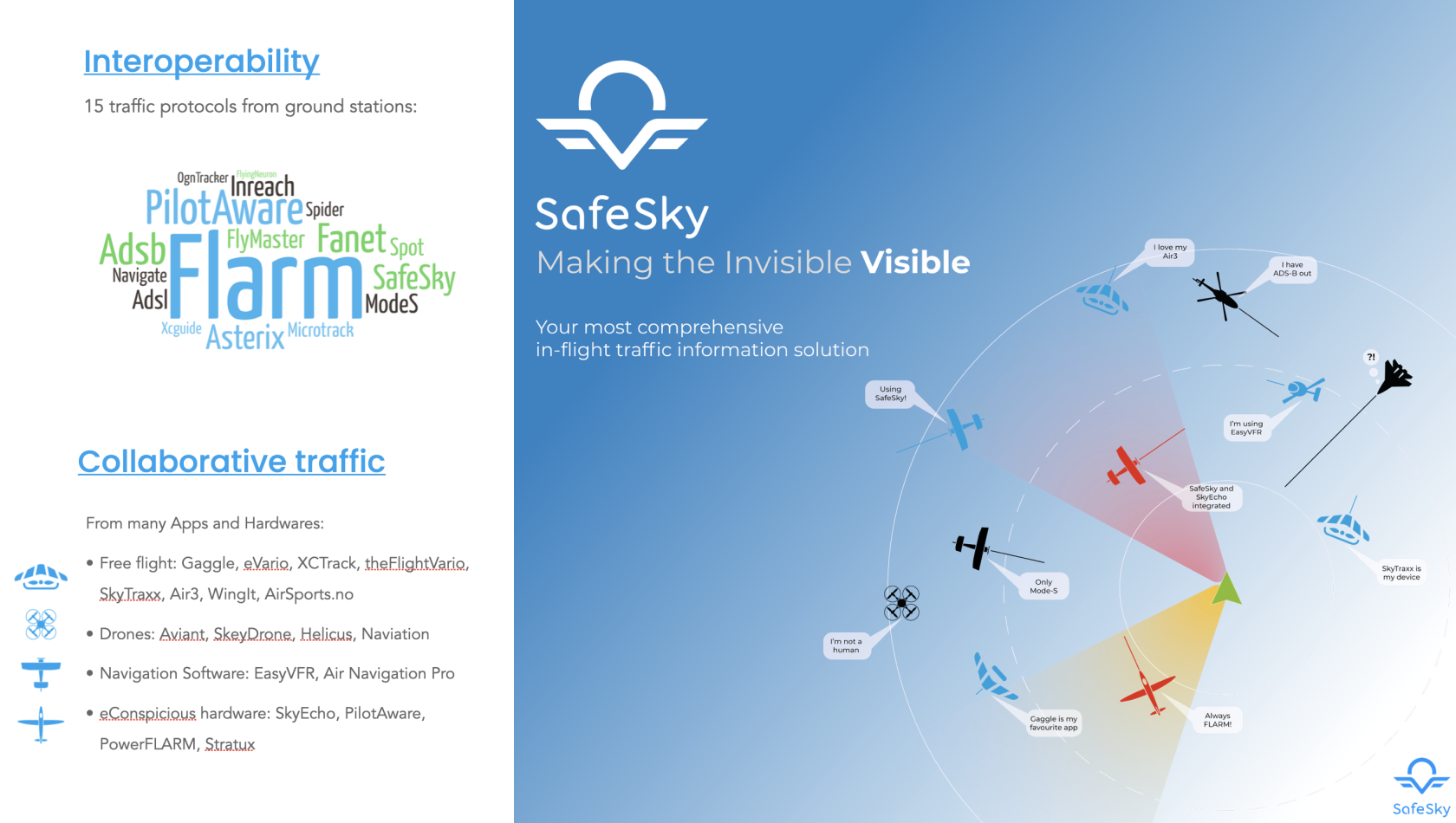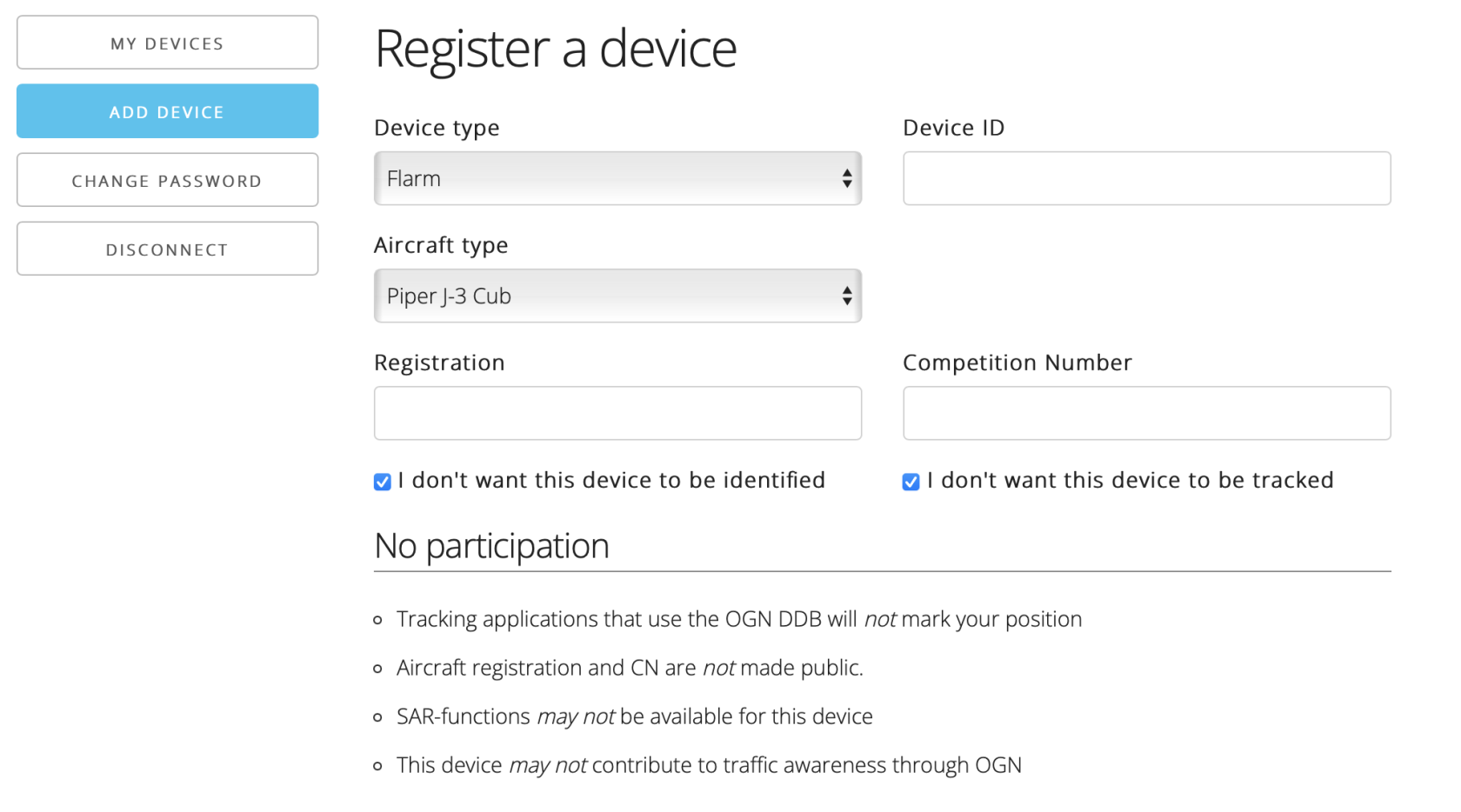Privacy Handling
Introduction
At SafeSky, we understand and prioritise the importance of privacy in the modern digital age, especially when it comes to the sensitive realm of aircraft tracking. As an organisation dedicated to providing real-time and accurate flight information, we are committed to upholding the highest standards of privacy protection for all individuals involved. This commitment extends to both the users of our services and the individuals whose data may be captured during the course of our operations.
SafeSky is at the forefront of aviation safety through its innovative approach to aggregating traffic information from a diverse array of sources.
To provide real-time and comprehensive situational awareness to pilots, air traffic controllers, and aviation stakeholders, SafeSky collects and consolidates traffic information from multiple sources, including radar systems, ADS-B receivers, transponders, FLARM, FANET, PilotAware, OGN Tracker, ADS-L, Mode-S, FlyingNeuron, Remote ID, and also Navigation Softwares variometer apps, commercial and recreational drone traffic, and many other relevant aviation systems. By harnessing the power of this aggregated data, SafeSky offers a consolidated and accurate representation of aircraft movements, enabling pilots to make informed decisions and navigate the skies with heightened safety and confidence.
Privacy terms for FLARM, FANET, PilotAware, ADS-L and other SRD860 band (≈ 868 MHz) Systems
The accessibility of FLARM, FANET, PilotAware, ADS-L and other systems operating at the 868MHz frequency is rooted in the principles of open information sharing and enhanced aviation safety.
The use of the 868MHz frequency range allows these systems to broadcast critical flight data, including position, altitude, and other relevant information. This information is vital for collision avoidance and maintaining safe separation between aircraft, particularly in scenarios involving gliders and other light aviation vehicles. By making this data openly accessible, these systems contribute to improved visibility and awareness among pilots, helping to prevent potential accidents and ensuring smoother airspace management.
The absence of personal data transmission by default when using the 868MHz frequency is a deliberate design choice driven by the priorities of privacy, security, and operational efficiency within the context of aviation and related systems.
Here are some key reasons why personal data is not carried by default when using the 868MHz frequency:
-
Privacy Protection: The aviation community recognises the importance of safeguarding individuals' privacy. By not transmitting personal data, such as names or contact information, the systems operating on the 868MHz frequency prioritize the privacy of pilots and other stakeholders.
-
Minimized Security Risks: Transmitting personal data over the airwaves can introduce security vulnerabilities and the potential for unauthorized access. By avoiding the transmission of personal information, the systems mitigate the risks associated with data interception or unauthorized use.
-
Operational Focus: The primary purpose of systems like FLARM, FANET, and PilotAware is to enhance aviation safety through collision avoidance and situational awareness. By concentrating on essential flight data—such as aircraft positions, altitudes, and headings—these systems optimise their capabilities and ensure that the most relevant information is exchanged.
-
Efficiency: Transferring large volumes of personal data over the airwaves could strain the available bandwidth and compromise the reliability of the systems. By limiting transmissions to critical flight-related data, the systems maintain operational efficiency and responsiveness.
-
Compliance with Regulations: Various regulations, such as data protection and privacy laws, influence how personal data is collected, processed, and transmitted. By avoiding the transmission of personal data, these systems can operate in alignment with applicable regulations.
-
User Control: Pilots and users have the ability to opt for greater privacy protection and data control. If they choose to share personal data for specific purposes, they can do so through authorized channels while maintaining control over what information is shared and when.
Open Glider Network Database
The Open Glider Network (OGN) operates as a data processor within the realm of aircraft tracking, focusing on the collection and dissemination of real-time flight data. In this capacity, OGN primarily acts as an intermediary between various glider tracking devices and users seeking accurate and up-to-date flight information. It's essential to recognize OGN's role as a data processor, implying that it handles personal and operational data on behalf of glider pilots and their associated devices.
Respecting the privacy concerns of pilots and individuals within the aviation community, OGN has implemented a proactive approach to address the issue of visibility on its network. For pilots who prefer not to have their flight information disclosed on the OGN network and its partners, the organisation has established a dedicated registration process. This registration allows pilots to assert their choice of remaining unlisted or hidden from public view.
This is the official place to register your aircraft and describe your visibility preferences: http://wiki.glidernet.org/ddb
FLARM Stealth mode
On some devices, stealth mode can be enabled from the configuration.
The term "stealth mode" in the context of FLARM refers to a setting that makes an aircraft's FLARM system transmit less frequently or with reduced information. It's often confused with the ability to become invisible with others.
According to the official documentation: This is useful only for gliders competing in a centralised competition. Other types of aircraft should not use it. Enabling it may lead to tracking services ignoring the signal.
Stealth mode is typically used to hide tactically relevant flight data for competition usage. Receiving stations may use the received data for the purpose of traffic safety only or with a time delay of 10 minutes. Typically, websites like Spot The Gliders will not provide historical traces.
In the context of SafeSky, only live traffic is visible; no historical tracks are available. Therefore, a pilot who does not want to be visible on the SafeSky network should not used Stealth mode, but should register with the OGN Database instead.


